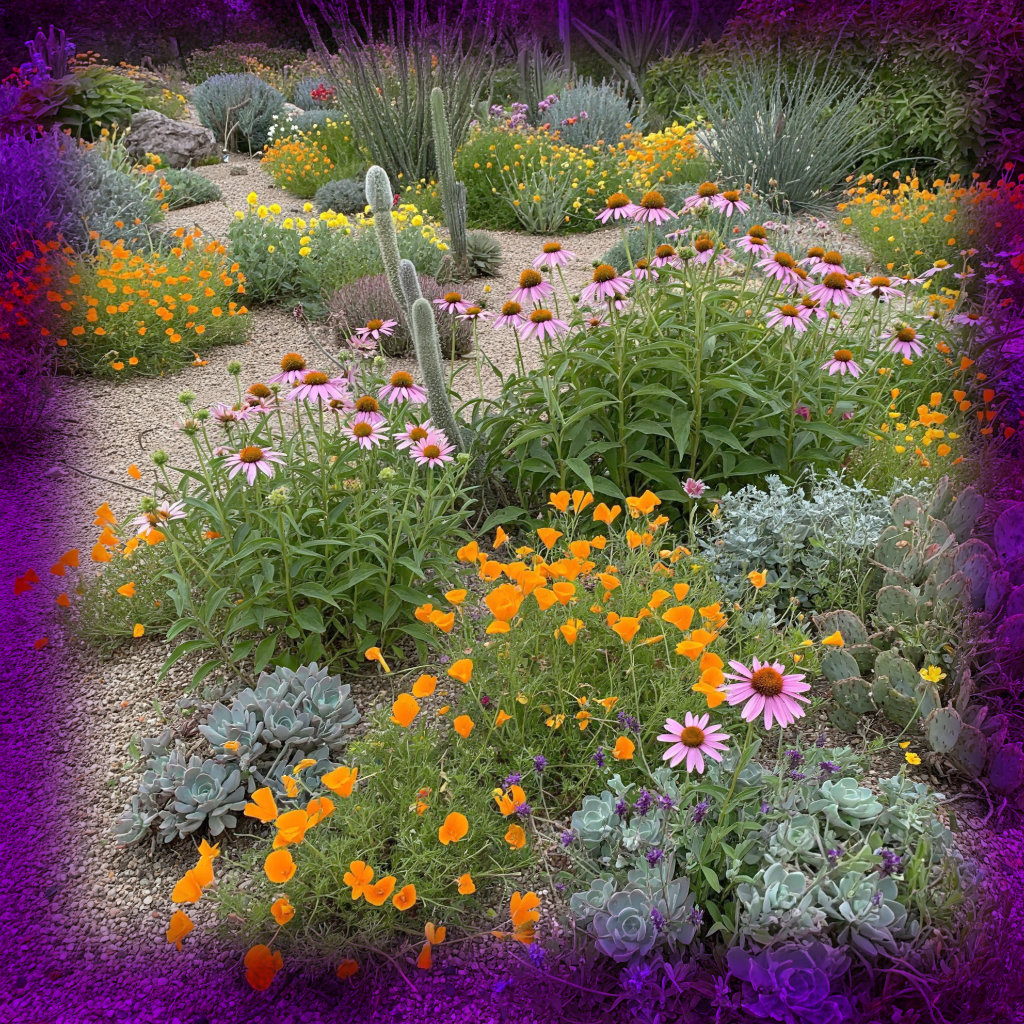Introduction: Rethinking Desert Landscaping
The conventional wisdom of desert gardening has long championed native plants exclusively. While this approach offers clear benefits, contemporary horticulture reveals exciting possibilities when we thoughtfully integrate non-native species. This expanded vision of desert gardening creates landscapes that are not only water-wise but also ecologically rich and visually stunning.
Modern arid gardens can become living laboratories where plants from similar climates around the world coexist with natives, forming resilient plant communities. The key lies in understanding microclimates, soil dynamics, and water requirements to create harmonious combinations that thrive under harsh conditions.
Challenging Conventional Desert Garden Wisdom
The Native Plant Paradigm and Its Limitations
Native plants undoubtedly form the backbone of successful desert gardens. Adapted over millennia to local conditions, they require minimal intervention once established. However, strict adherence to native-only planting schemes can limit a garden’s potential in several ways:
- Limited seasonal interest (many desert natives bloom briefly)
- Reduced biodiversity support
- Fewer options for specific microclimates
- Less capacity to adapt to changing climate conditions
The Case for Strategic Diversity
Thoughtfully selected non-native plants can complement natives by:
- Extending bloom seasons
- Providing alternative food sources for pollinators
- Offering different structural forms and textures
- Improving soil health through varied root systems
The Mediterranean basin, South Africa, Australia, and parts of South America offer particularly suitable candidates, as their native plants evolved under similar climatic pressures.
Mastering Microclimates in Arid Landscapes
Mapping Your Garden’s Hidden Variations
Every desert property contains microclimates that can support different plant communities:
Heat Amplifiers:
- South-facing walls
- Paved surfaces
- Rock mulches
- Reflective surfaces
Cool Zones:
- North-facing exposures
- Areas under tree canopies
- Low-lying depressions
- Spaces near water features
Wind Channels:
- Between buildings
- Along fence lines
- At property edges
Strategic Plant Placement
Understanding these microclimates allows for precise plant placement:
- Heat-loving species like Agave ovatifolia thrive near south walls
- Part-shade tolerant Tecoma stans flourishes under Palo Verde trees
- Wind-resistant Muhlenbergia capillaris works well along exposed edges
Soil Science for Mixed Plantings
Understanding Desert Soil Challenges
Native desert soils present unique characteristics:
- Low organic matter content
- High mineral content
- Often alkaline pH
- Variable drainage
Custom Soil Amendments
Different plant groups require tailored soil preparation:
For Succulents and Cacti:
- 50% native soil
- 30% coarse sand
- 20% pumice or perlite
For Flowering Perennials:
- 60% native soil
- 20% compost
- 10% coconut coir
- 10% vermiculite
For Mediterranean Herbs:
- 40% native soil
- 30% compost
- 20% sand
- 10% peat moss
Water Management Strategies
Hydrozoning Principles
Effective water management begins with intelligent grouping:
Zone 1 (High Water):
- Near downspouts
- Shady areas
- Includes plants like Salvia greggii
Zone 2 (Moderate Water):
- Morning sun areas
- Includes plants like Caesalpinia pulcherrima
Zone 3 (Low Water):
- Full sun exposures
- Includes most cacti and succulents
Smart Irrigation Techniques
Modern irrigation technology offers precise water delivery:
- Pressure-compensating drip emitters
- Weather-based smart controllers
- Soil moisture sensors
- Dual-line systems for mixed plantings
Designing with Diverse Plant Forms
Structural Plants as Living Sculpture
Architectural specimens create garden focal points:
- Columnar: Stenocereus thurberi
- Rosette-forming: Agave parryi
- Weeping: Calliandra californica
- Geometric: Euphorbia ammak
Textural Contrasts
Combine plants with varying leaf structures:
- Needle-like: Dasylirion wheeleri
- Fleshy: Graptopetalum paraguayense
- Feathery: Nassella tenuissima
- Glossy: Rhus lancea
Color Harmonies
Desert-appropriate color schemes:
- Monochromatic: Silver foliage garden
- Complementary: Purple and yellow blooms
- Analogous: Red-orange-yellow progression
Seasonal Planning for Year-Round Interest
Bloom Sequence Strategies
Stagger flowering times for continuous color:
Spring:
- Penstemon pseudospectabilis
- Eschscholzia californica
Summer:
- Hibiscus coulteri
- Baileya multiradiata
Fall:
- Chrysactinia mexicana
- Zauschneria californica
Winter:
- Aloe vera
- Euryops pectinatus
Evergreen Framework Plants
Maintain structure during dormant periods:
- Yucca rostrata
- Nolina nelsonii
- Cercidium floridum
Wildlife Habitat Creation
Pollinator Support Systems
Diverse plantings support more pollinator species:
- Long-tongued bees: Salvia spp.
- Hummingbirds: Justicia californica
- Butterflies: Asclepias subulata
- Night-flying moths: Datura wrightii
Shelter and Food Sources
Create layered habitat:
- Canopy: Olneya tesota
- Understory: Lycium spp.
- Groundcover: Verbena gooddingii
Maintenance Considerations
Pruning Techniques
Specialized approaches for different growth habits:
- Cacti: Sterilized tools, angled cuts
- Shrubs: Selective thinning cuts
- Grasses: Annual rejuvenation pruning
Pest Management
Ecological control methods:
- Beneficial insect habitat
- Companion planting
- Horticultural oils
- Physical barriers
Climate-Adaptive Strategies
Future-Proofing Your Garden
Select plants with climate resilience:
- Higher temperature tolerance
- Greater drought resistance
- Increased storm resilience
Rainwater Harvesting
Maximize natural water capture:
- Swales and berms
- French drains
- Cistern systems
- Permeable paving
Conclusion: The New Desert Garden Aesthetic
The most compelling desert gardens today transcend traditional boundaries, blending global drought-tolerant species with natives to create landscapes that are both ecologically sound and visually arresting. This approach requires deeper horticultural knowledge but rewards gardeners with more dynamic, resilient, and biodiverse spaces.
By understanding microclimates, soil science, and water management, we can create gardens that not only survive but thrive under desert conditions. The future of arid-region landscaping lies in this thoughtful integration of plants from similar climates worldwide, creating gardens that are sustainable, beautiful, and teeming with life.

